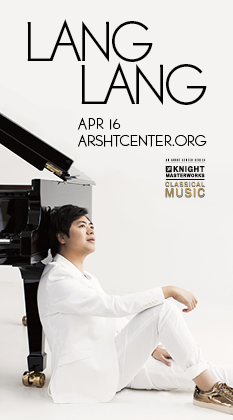Abbado, New World bring new life to Beethoven’s Fifth
Beethoven’s Symphony No. 5 in C minor must be the most frequently played symphony in the repertoire. At Saturday night’s New World Symphony concert, however, guest conductor Roberto Abbado demonstrated that this warhorse can still register potent impact. With the orchestra playing in top form, Abbado illuminated countless details that are often obscured in a performance that made the music sound fresh again.
Abbado is the nephew of the late Italian conductor Claudio Abbado. He has conducted on major opera and symphonic podiums internationally. In recent seasons Abbado has been an artistic partner with the St. Paul Chamber Orchestra where he has led complete cycles of the nine Beethoven symphonies.
From the iconic four-note motif that opens the Fifth Symphony, Abbado imbued the score with Italianate warmth mixed with great intensity and awesome orchestral control. This was clear-cut Beethoven, with a relentless sense of forward motion. Wind lines were unusually clear and sharply accented.
The Andante con moto was given broad lyrical space, the episodic variants of the noble principal melody emerging organically. Abbado paid particular attention to Beethoven’s dynamic markings, drawing many gradations of softness that made the orchestral salvos all the more dramatic. The cello section played with glowing tone and the brass had an exceptional night.
There was a real sense of mystery in the Scherzo and the basses and cellos really dug into the trio, taken by Abbado at a fierce clip. In the transition to the finale, the timpani was given due prominence and the movement’s principal theme rang out triumphantly. Balances were near perfect, the brass never overwhelming the string figurations. Abbado built the movement with tremendous force, the energy growing right up to the final heroic chords. When played with such instrumental detailing and freshness of execution, the symphony emerges anew as one of Beethoven’s greatest works.
In the program’s first half, Abbado highlighted the instrumental felicities in two scores by Manuel de Falla. Falla’s rich orchestral palette, strongly influenced by French impressionism, resounded wonderfully in the spacious acoustics of Miami Beach’s New World Center.
There was a knife-edged jolt in the initial trumpet chords of the suite from the ballet El Amor Brujo. Abbado kept the underlying piano and wind writing audible and sustained the long string tremolo, gradually increasing the dynamic range. He highlighted the score’s modernity, with dissonant details that are frequently smoothed. Restless tension kept the edge on the final morning dance, the tolling of bells well balanced against the full orchestra.
Amanda Crider’s smoky mezzo-soprano assayed the flamenco vocal solos with gutsy abandon. Her rhythmic acuity and incisive declamation mirrored the shifting emotions from love lost to the rebirth of life and happiness.
Abbado treated Nights in the Gardens of Spain as a broad symphonic canvass, with the solo piano as part of the orchestral fabric. Interludes of misty impressionism were given extra assertiveness by piercing flute and strings.
Ingrid Fliter’s deft touch in the keyboard role encompassed the languorous melodies as well as the crisp dance rhythms. Her pearly tone was exquisite in the quiet sections, and her flourishes in the finale were virtuosic without resorting to harsh pounding. The wind writing sparkled and Abbado astutely pulled off the quiet ending.
The New World Symphony repeats the program 2 p.m. Sunday at the New World Center in Miami Beach. nws.edu; 305-673-3331.
Posted in Performances
Leave a Comment
Sun Dec 14, 2014
at 1:41 pm
No Comments






